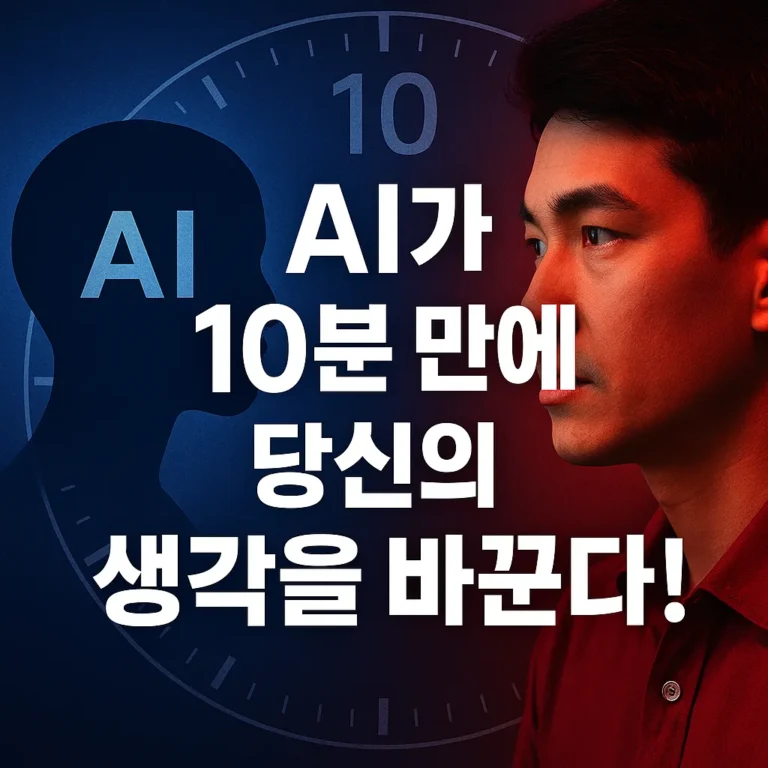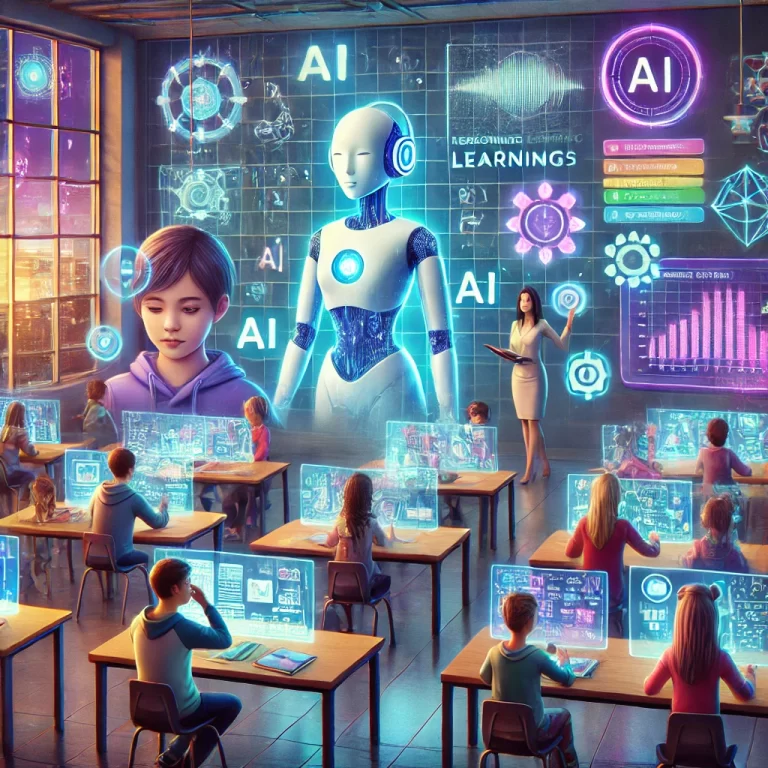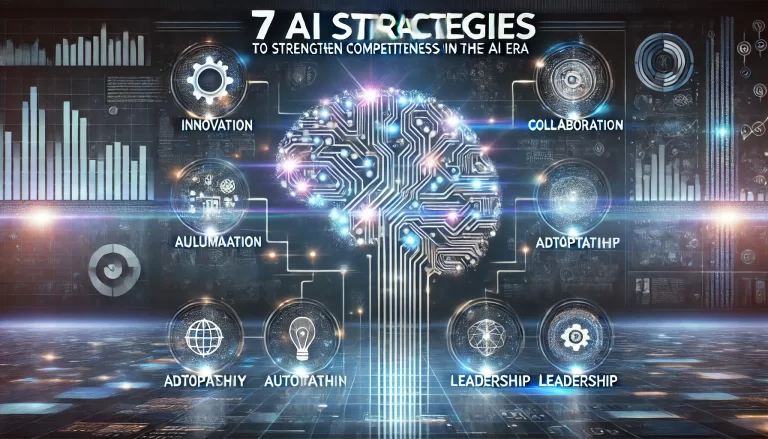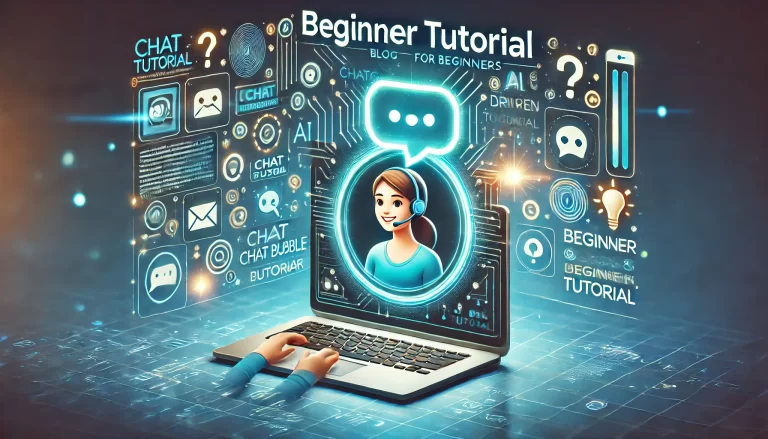The Alarming Effect of AI on Student Learning: MIT Study and Teaching Strategies Explained
Artificial intelligence is no longer a futuristic concept. Tools like ChatGPT have entered classrooms, homes, and study sessions across the world. For many students, these AI-powered systems provide instant help with essays, explanations, and research tasks. They are fast, responsive, and increasingly persuasive as learning companions.
Yet behind the convenience lies a growing concern. As students turn to AI to assist with or even complete academic work, educators are beginning to ask a deeper question: What is the effect of AI on student learning? This question is not just about plagiarism or academic honesty. It points to a much more fundamental issue about how students think, retain information, and develop understanding across time.
A recent study conducted at MIT provides new and measurable insights into this question. Using brainwave monitoring and controlled writing tasks, researchers explored how students engage cognitively when using AI tools compared to traditional methods. The findings are striking. While AI may streamline the writing process, it may also reduce cognitive effort, weaken memory formation, and impair critical thinking.
This blog explores those findings and offers strategies educators can use to integrate AI without sacrificing the core goals of learning. If we understand the effect of AI on student learning, we can shape its use in ways that enhance, rather than erode, intellectual development.
1. Inside the MIT Study: AI’s Impact on Student Writing and Memory
To investigate the effect of AI on student learning, researchers at the MIT Media Lab conducted a multi-phase study that combined neuroscience, writing performance, and linguistic analysis. Their goal was not only to examine the quality of student output but to measure how deeply students engaged with content when using different digital tools.
Participants were divided into three groups. One group used an AI assistant, specifically ChatGPT. Another used a search engine like Google to gather supporting information. The third group completed their writing tasks without any external help, relying solely on prior knowledge. Each group wrote essays across three sessions. In a fourth session, the groups switched roles, enabling researchers to observe how behavior shifted when students who had used AI wrote without it, and vice versa.
A key feature of the study was the use of electroencephalography (EEG) to track brain activity during writing. Researchers analyzed neural frequency bands to assess attention, memory load, and overall cognitive effort. These neurological readings were paired with quote-recall tests, student interviews, and assessments conducted by both teachers and an AI scoring model.
The findings revealed a consistent pattern. Students in the AI group demonstrated weaker brain connectivity and lower engagement during writing. Their essays tended to be more formulaic, included content they could not later recall, and lacked signs of deep processing. In contrast, students in the brain-only group exhibited stronger neural activation, better memory retention, and a greater sense of ownership over their writing.
These results are visually summarized in Figure 1, which compares the three groups and illustrates how different tools affect student engagement, memory, and learning quality.
This research shows that the effect of AI on student learning extends beyond the final product. It fundamentally shapes how students process, retain, and understand the material they work with.

2. Cognitive Trade-Offs: The Effect of AI on Student Learning
The effect of AI on student learning becomes most visible when students rely on AI tools like ChatGPT to complete assignments for them. While these tools may appear to save time and increase productivity, they often come with hidden costs. One of the most critical trade-offs is cognitive effort.
In the MIT study, students were divided into three groups. One group completed tasks without AI, another group used AI freely, and a third group used AI with guidance and reflection prompts. The results showed that students who used AI without structure produced answers more quickly, but their understanding and memory were significantly weaker. In contrast, students who engaged deeply without AI or used AI more thoughtfully performed better in delayed recall tests.
This finding highlights a central concern: when students allow AI to handle the thinking, they do not build or reinforce their own cognitive pathways. Memory recall, mental organization, and the ability to explain complex ideas all suffer. These are not temporary effects. Over time, habitual reliance on AI may erode the very skills that education aims to develop.
The effect of AI on student learning, then, is not just about content quality or task speed. It directly impacts how students process, store, and retrieve information. Even when AI provides the correct answer, students may walk away having learned very little. Without effort, there is no lasting knowledge.
This raises an important question for educators: Should AI be allowed in situations where learning, not just performance, is the goal? The evidence suggests that the more students offload their thinking, the less they retain. Preserving mental effort is not a barrier to learning. It is the foundation of it.
3. Cognitive Debt: How AI Weakens Learning Over Time
One of the most important insights from the MIT study is its exploration of a concept known as cognitive offloading. This refers to the act of shifting mental effort to external tools, such as writing reminders on paper or using a calculator to solve equations. When applied to artificial intelligence, this offloading expands beyond simple tasks. Students begin to rely on AI to organize thoughts, synthesize arguments, and even generate complete responses.
In the fourth session of the study, researchers asked students who had previously used ChatGPT for all writing tasks to work without any digital assistance. The change was dramatic. These students performed poorly, both in the quality of their writing and in their ability to recall what they had written earlier. EEG data revealed lower brain activity, and many students struggled to explain their own previous arguments. Even when the AI tool was removed, its earlier use continued to suppress student engagement.
The researchers referred to this phenomenon as cognitive debt. Just as financial debt accumulates over time through repeated borrowing, cognitive debt builds when students continuously avoid mental effort. Tasks that are crucial for memory development and reasoning are outsourced to the AI. While the process may appear efficient on the surface, the student loses the opportunity to build essential cognitive skills. Over time, this weakens the brain’s ability to retain information, form insights, and think independently.
This finding deepens our understanding of the effect of AI on student learning. It is not limited to output quality or writing mechanics. It shapes how students approach challenges, how willing they are to struggle through complexity, and how much effort they devote to truly understanding material. When students learn to avoid effort, they also lose the cognitive rewards that come from persistence.
Figure 2 presents a visual model of this process. It shows how repeated use of AI leads to declining cognitive effort, which gradually weakens learning and builds cognitive debt. This progression is essential for educators to recognize, especially when considering long-term learning outcomes.
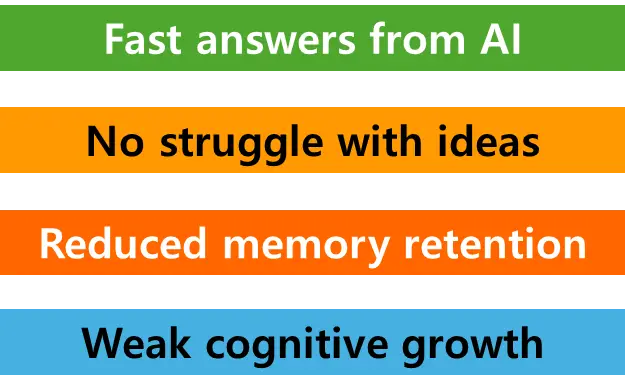
4. Classroom Strategies to Preserve Learning in the Age of AI
The effect of AI on student learning is not inevitable. While the MIT study identified negative consequences when students rely too heavily on AI, educators can guide its use to promote engagement, reflection, and deeper understanding. With well-defined strategies, AI can support the learning process rather than weaken it.
A foundational strategy is to establish clear expectations for when and how AI tools may be used. Teachers might permit AI during brainstorming or early research, while reserving final drafts, assessments, and critical analysis for independent work. This approach helps students engage with material using their own thinking before turning to external support.
Another effective method is to incorporate AI into reflective exercises. For example, students can review an AI-generated response and compare it to their own. They might ask which version demonstrates stronger reasoning or more original insight. This comparison encourages metacognitive awareness and reveals the value of personal effort.
Teachers can also prompt students to evaluate what they actually remember after completing an AI-assisted task. A reflection question such as, “What do I recall without looking back?” helps students identify the difference between passive consumption and active learning. These small check-ins strengthen awareness of memory and focus.
Transparency plays an important role as well. Educators can demonstrate responsible AI use by walking through its strengths and weaknesses in front of students. Reviewing an AI-generated paragraph together and critiquing it as a class teaches students to think critically about information, rather than accepting it automatically.
Finally, teachers should align their grading criteria with qualities that AI tools tend to overlook. Rubrics that reward personal voice, logical reasoning, and originality make it clear that independent thought matters. When students see that their own ideas lead to higher achievement, they are more likely to invest fully in the learning process.
By combining boundaries, reflection, and thoughtful instruction, educators can reduce the negative effect of AI on student learning. These strategies protect core cognitive skills, reinforce student identity, and promote lasting understanding.
Table 1 offers a side-by-side comparison of shallow and thoughtful AI use. It highlights how careless reliance on AI can limit growth, while guided engagement can enhance learning outcomes.
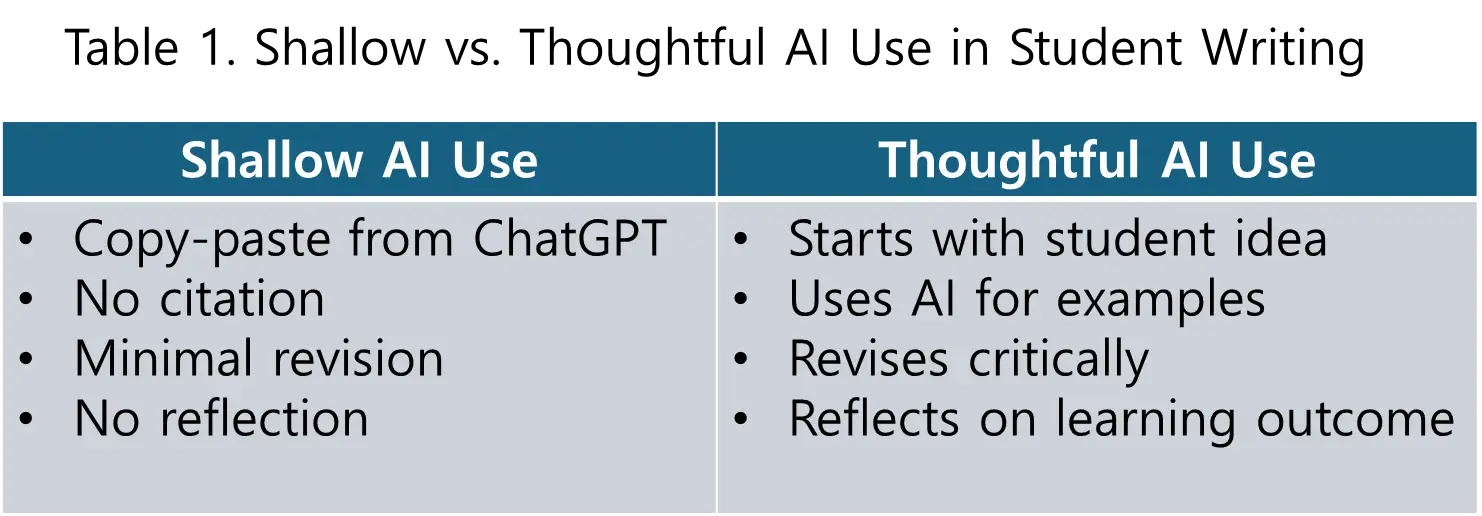
5. Preserving Critical Thinking and Memory in the AI Era
The long-term effect of AI on student learning depends on whether schools can preserve the mental habits that support deep understanding. As the MIT study highlighted, students who rely too heavily on AI tend to lose the ability to recall, reason, and reflect independently. Preventing that loss requires a renewed focus on building cognitive strength alongside digital fluency.
Critical thinking must remain a core learning outcome. Students need regular opportunities to form arguments, question assumptions, and evaluate evidence without defaulting to pre-written solutions. This does not mean banning AI entirely. Instead, educators can frame critical thinking as a process of choosing when and how to trust external information, including AI outputs.
Memory also plays a larger role than some educators assume. In an age when facts are always available online, it may seem unnecessary to commit ideas to memory. Yet research consistently shows that information stored in long-term memory is essential for reasoning, problem-solving, and creativity. AI can assist with recall, but it cannot replace the deep connections formed when learners actively retrieve and apply knowledge.
One way to protect these mental functions is to design learning tasks that require both effort and originality. Writing from memory, explaining concepts to others, and solving problems in unfamiliar contexts all strengthen the brain’s capacity for flexible thinking. AI can support these goals if used as a guide, not a shortcut.
Ultimately, the challenge is not simply to adapt to AI, but to use it in ways that preserve and enhance the human mind. The effect of AI on student learning will depend on whether schools continue to nurture the core thinking skills that technology cannot replicate.
6. Rethinking the Role of Educators in the Age of AI
As AI tools continue to reshape learning environments, the role of educators is shifting. Teachers are no longer limited to delivering content. Instead, they are becoming facilitators who help students think critically, reflect deeply, and learn responsibly. The effect of AI on student learning is directly influenced by how teachers guide and structure its use in the classroom.
One of the most important responsibilities of educators is to help students separate speed from substance. While AI can generate quick answers, students still need to explain, justify, and apply their knowledge. Teachers can support this by requiring students to show their reasoning, describe their process, and reflect on what they actually learned.
Educators also play a crucial role in developing ethical habits around technology. When students rely on AI without acknowledgment or personal effort, they risk disconnecting from the value of the learning process. Teachers can model responsible AI use, discuss digital ethics openly, and reinforce academic honesty through clear policies and expectations.
In addition, AI offers new possibilities for differentiated learning. It can suggest resources, generate practice questions, or provide feedback. However, it is the educator who must ensure that these tools are used meaningfully. Only a teacher can assess whether a student is truly understanding the material, needs a challenge, or requires more support.
Rather than viewing AI as a threat to the teaching profession, educators can position themselves as leaders in how AI is integrated into learning. Their influence is key to helping students become thoughtful, independent learners who understand how to work with AI without giving up their own voice, memory, and reasoning skills.
7. Conclusion: Teaching for a Future That Thinks
The effect of AI on student learning is not fixed. It is shaped by the choices made in classrooms, homes, and institutions. The MIT study offers a powerful warning: when students rely on AI to write for them, they may lose more than just the habit of writing. They may lose the ability to think clearly, remember deeply, and take ownership of their ideas.
But this outcome is not inevitable. AI can be used to support creativity, clarify confusion, and offer feedback. The key is in how students use it and how educators guide that use. Responsible AI integration starts with boundaries, reflection, and an emphasis on effort. It values learning that lasts over shortcuts that impress.
For teachers, this is a call to lead with intention. Teach students that AI is a tool, not a replacement. Show them how thinking, revising, and remembering make them stronger, not slower. Build assignments that reward originality, reflection, and growth.
For students, this is a chance to take back the learning process. Use AI to explore, not escape. Let it challenge your thinking, not do the thinking for you.
We are entering an age where machines can do more. The real question is whether students will still want to. That decision will depend on how we teach, how we think, and how we shape the future of learning.
📚 References
- When Students Use AI to Write, What Do They Lose? (2024)
MIT researchers analyze how AI-written work affects students’ memory, reasoning, and sense of authorship. https://arxiv.org/abs/2506.08872 - Artificial Intelligence and the Future of Learning (2023)
National Education Policy Center outlines how AI disrupts learning equity and offers policy responses for schools. https://nepc.colorado.edu/publication/ai-future-learning - How to Help Students Think Critically in the Age of AI (2023)
Harvard Graduate School of Education offers classroom strategies that strengthen student thinking in AI-supported environments. https://www.gse.harvard.edu/news/uk/23/10/critical-thinking-ai - Desirable Difficulties and Long-Term Learning (2021)
The Learning Scientists explain how effort-based learning helps students retain information and improve problem-solving. https://www.learningscientists.org/blog/2021/9/30-1 - The Cognitive Costs of Outsourcing Thinking to AI (2023)
The American Psychological Association discusses the mental consequences of overreliance on intelligent tools. https://www.apa.org/news/press/releases/2023/11/cognitive-costs-ai - How AI Tools Are Reshaping the Writing Process (2023)
EdSurge explores how AI is changing student composition habits and what teachers are doing in response. https://www.edsurge.com/news/2023-05-22-how-ai-tools-are-reshaping-the-writing-process - Teaching in the Age of AI: What Educators Should Know (2023)
Education Week shares expert advice for integrating AI tools while preserving academic integrity and student effort. https://www.edweek.org/technology/teaching-in-the-age-of-ai-what-educators-should-know - AI in the Classroom: Promises and Pitfalls (2023)
Common Sense Education provides guidance for evaluating AI tools and creating safe, balanced digital learning practices. https://www.commonsense.org/education/articles/ai-in-the-classroom
🔑 Keywords:
effect of AI on student learning, AI in education, MIT AI study, AI and cognitive learning, responsible AI use in classroom, AI writing tools students, memory and AI tools, AI in schools, student critical thinking AI, ChatGPT in education, AI learning outcomes, classroom strategies AI, ethical AI use education, cognitive offloading AI, student engagement AI


